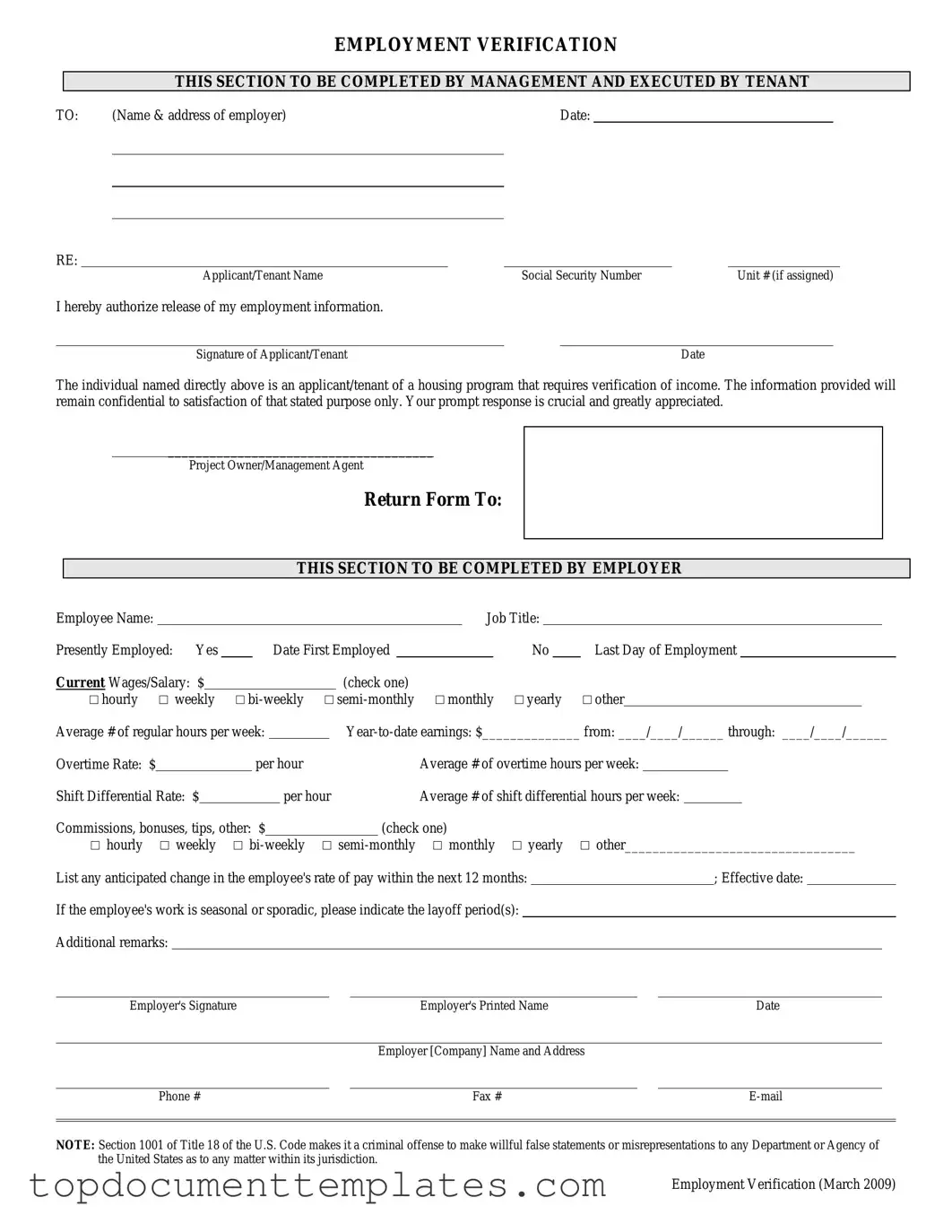Blank Employment verification form PDF Form
The Employment Verification Form is a document used by employers to confirm the employment status and history of a current or former employee. This form typically includes details such as job title, dates of employment, and salary information. Understanding how to properly fill out this form is crucial for both employees seeking new opportunities and employers verifying candidate information.
To get started, fill out the form by clicking the button below.
Open This Form
